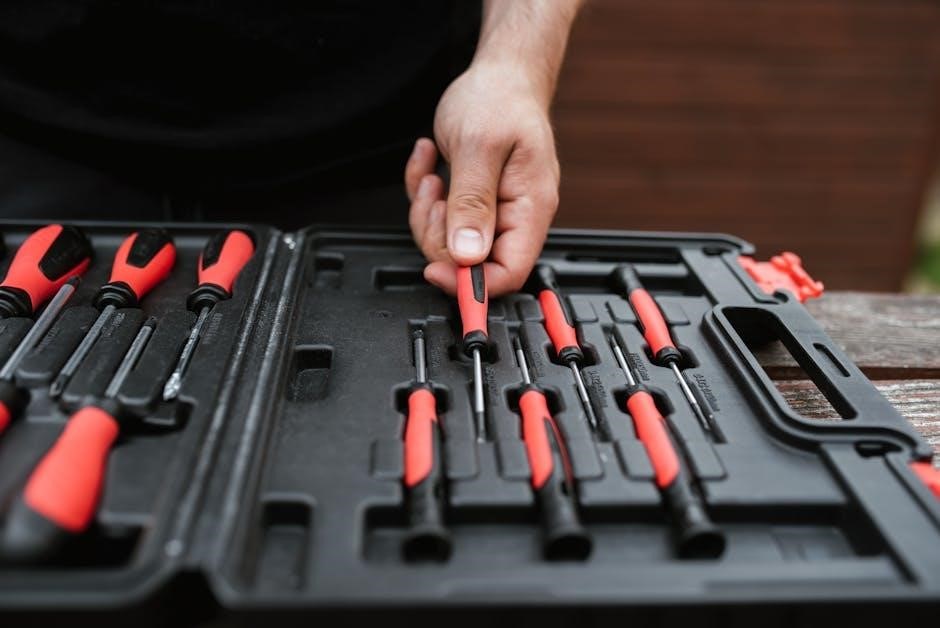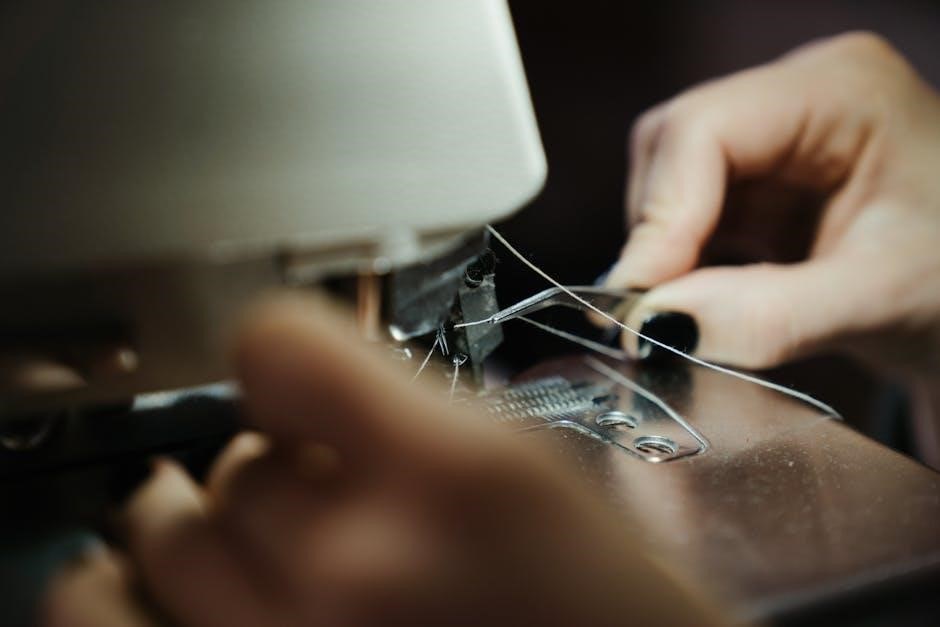Freestyle Precision Neo Manual: An Overview
The Freestyle Precision Neo manual serves as a comprehensive guide. It is designed to assist users in effectively using the Freestyle Precision Neo system. It provides detailed instructions, ensuring accurate blood glucose monitoring. It covers setup, testing, and troubleshooting for optimal use.

Understanding the Freestyle Precision Neo System
The Freestyle Precision Neo system is designed for blood glucose and ketone monitoring, aiding diabetes management. It’s for in vitro diagnostic use. The system is not intended for diagnosing diabetes. It’s also not for neonatal testing. It offers features like trend indicators.
Components of the System
The Freestyle Precision Neo system includes several key components that work together to provide accurate blood glucose monitoring. The main component is the FreeStyle Precision Neo meter itself, which displays the blood glucose readings and stores historical data. It also consists of FreeStyle Precision Neo test strips, essential for blood sample analysis. These strips require a small blood sample and deliver quick results.
Additionally, the system incorporates a lancing device, used to obtain a blood sample from the fingertip. Lancets, which are small, sterile needles, are inserted into the lancing device. Finally, a control solution is utilized to ensure the meter and test strips are functioning correctly, confirming accurate readings.
Intended Use and Limitations
The Freestyle Precision Neo system is intended for self-testing by individuals with diabetes or by healthcare professionals to monitor blood glucose levels. It aids in managing diabetes but isn’t for diagnosis or neonatal testing. The system is designed for in vitro diagnostic use, meaning it’s for use outside the body.
Limitations include that it should not be used for diagnosing diabetes. Results from the system should be interpreted with guidance from healthcare providers. Factors like improper storage of test strips, user error, and hematocrit levels can affect accuracy. The system is not meant for use on newborns.
Setting Up the Freestyle Precision Neo
Setting up the Freestyle Precision Neo involves initial configuration. This includes inserting the battery and setting the date and time for accurate tracking. Proper setup is crucial for reliable blood glucose monitoring and data management.
Initial Setup and Configuration
The initial setup of your Freestyle Precision Neo is a straightforward process. First, ensure you have all components, including the meter and the battery. To begin, locate the battery compartment on the device’s back. Insert the battery, making sure to match the correct polarity (+ and -). Once the battery is in place, the meter will power on automatically. The screen will display a welcome message, prompting you to configure the device settings. Follow the on-screen instructions to set up your preferred language, date format, and time. Confirm your selections to finalize the initial configuration.
Setting Date and Time
To accurately track your blood glucose levels, setting the correct date and time on your Freestyle Precision Neo is essential. Begin with the meter off, and then press and hold the “M” button until the setup screen appears. Use the up and down arrows to adjust the year, month, and day to the current date. Press the “M” button to confirm each selection. Next, adjust the hour and minute using the same arrow keys. Once the correct time is displayed, press the “M” button again to save the changes. This ensures that all your readings are accurately timestamped.

Performing a Blood Glucose Test
Performing a blood glucose test involves several key steps. These steps include preparing your testing supplies and the meter. Proper technique ensures accurate results. It also involves understanding how to apply blood to the test strip.
Preparing for the Test
Before initiating a blood glucose test, thorough preparation is essential for accurate results with the Freestyle Precision Neo. Begin by washing your hands thoroughly with soap and warm water, ensuring they are completely dry to prevent contamination or inaccurate readings. Gather all necessary supplies, including the Freestyle Precision Neo meter, compatible test strips, a lancing device, and sterile lancets. Check the expiration date on the test strip vial to ensure the strips are still valid for use. Prepare the lancing device by inserting a fresh lancet and adjusting the depth setting according to your comfort and skin type. Have a clean, dry surface available for performing the test, and ensure adequate lighting for clear visibility. Verify that the meter is powered on and displaying the correct date and time for accurate record-keeping.
Inserting the Test Strip and Applying Blood
Once prepared, carefully insert a new Freestyle Precision Neo test strip into the meter’s test strip port, ensuring it clicks securely into place. The meter should automatically power on and display a blood drop symbol, indicating it’s ready for testing. Use the prepared lancing device to gently prick your fingertip, obtaining a small drop of blood. Lightly massage your finger to encourage blood flow if needed, avoiding excessive squeezing. Bring the meter and test strip to the blood drop, allowing the strip’s absorbent tip to touch the blood. The meter will beep when sufficient blood has been applied. Ensure the blood sample fills the designated area on the test strip completely for accurate results. Avoid smearing or applying blood to other parts of the strip. After application, wait for the meter to display the blood glucose reading.
Understanding and Interpreting Results
After the Freestyle Precision Neo meter processes the blood sample, a blood glucose reading will appear on the display screen. This reading indicates the level of glucose in your blood at the time of testing, measured in milligrams per deciliter (mg/dL). Consult with your healthcare provider to understand your target blood glucose range. Compare your reading to this range to determine if your blood glucose is within acceptable levels. Readings that are significantly higher or lower than your target range may require immediate action, as advised by your doctor. Note any trend indicator arrows displayed alongside the reading, which can provide insight into whether your blood glucose is rising or falling. Keep a record of your readings, along with relevant information such as meal times, medication dosages, and physical activity, to identify patterns and improve diabetes management. If you’re unsure about interpreting your results, promptly seek guidance from a healthcare professional.
Features and Functionality
The Freestyle Precision Neo boasts several features. These include trend indicator arrows, which offer insights into glucose patterns. It also has memory storage for tracking results. These functionalities aid effective diabetes management.
Trend Indicator Arrows
The FreeStyle Precision Neo features trend indicator arrows. These arrows provide valuable insights into blood glucose patterns. The arrows appear on the meter’s display alongside the glucose reading. They indicate whether the glucose level is rising, falling, or remaining stable. This feature helps users understand the direction and rate of change in their blood glucose levels. It enables proactive management of diabetes by alerting users to potential highs or lows. The trend indicator arrows facilitate timely adjustments to diet, exercise, or medication, as advised by healthcare professionals. This enhances glycemic control and promotes overall well-being, offering a user-friendly approach to glucose monitoring.
Memory and Data Storage
The FreeStyle Precision Neo meter includes robust memory and data storage capabilities. It allows users to store a significant number of blood glucose test results. This feature enables easy tracking and analysis of glucose levels over time. The meter can store up to 1,000 test results. This extensive storage capacity supports comprehensive diabetes management. Users can review past readings to identify trends and patterns. This information aids in making informed decisions about their health. Stored data can also be shared with healthcare providers. It facilitates collaborative care and personalized treatment plans. The memory function promotes better self-management and improved health outcomes through data-driven insights.

Care and Maintenance
Proper care and maintenance are crucial for the FreeStyle Precision Neo. Regular cleaning ensures accurate readings and prolongs the device’s lifespan. Battery replacement is also necessary for uninterrupted use. Following these guidelines ensures reliable performance.
Cleaning and Storage
Maintaining the cleanliness of your Freestyle Precision Neo device is essential for accuracy and longevity. Always clean the meter with a soft, damp cloth. Avoid using harsh chemicals or submerging the device in water, as this can cause damage. Ensure the test strip port is free from debris for accurate readings;
Proper storage is equally important. Store the meter and test strips in a cool, dry place away from direct sunlight and extreme temperatures. Keep the test strip container tightly closed to protect them from humidity. Storing the device properly prevents inaccurate results and ensures reliable performance whenever you need it.
Changing the Battery
The Freestyle Precision Neo monitor requires a power source to operate correctly. When the low-battery symbol appears on the screen, it’s time to replace the battery. To change the battery, first, turn off the meter. Locate the battery door on the back of the device and slide it open. Remove the old battery carefully, noting its orientation.
Insert a new CR2032 battery, ensuring the positive (+) side faces up. Close the battery door securely. After replacing the battery, confirm that the meter powers on correctly. A fresh battery ensures accurate and reliable blood glucose readings every time you test.
Troubleshooting Common Issues
Encountering issues with your Freestyle Precision Neo meter can be frustrating. This section addresses common problems and provides solutions. If the meter displays an error message, consult the manual for specific troubleshooting steps related to that code. If the meter doesn’t turn on, ensure the battery is correctly installed and has sufficient charge.
For inaccurate readings, verify that the test strips are not expired and that you’re using the correct control solution. If problems persist, contact customer support for further assistance. Regular maintenance and adherence to instructions can prevent many issues.
Downloading and Using the FreeStyle Auto-Assist Neo Software
The FreeStyle Auto-Assist Neo software allows seamless data transfer from your meter to a computer. Begin by downloading the software from the official FreeStyle website. Ensure your computer meets the system requirements before installation. Once installed, connect your Freestyle Precision Neo meter using a compatible USB cable.
The software automatically uploads stored blood glucose readings. You can then view, analyze, and generate reports for better diabetes management. This helps identify trends and patterns, which can be shared with your healthcare provider for informed treatment decisions. Regularly back up your data for safekeeping.

Safety Information and Precautions
Always consult your healthcare provider before making changes to your diabetes management plan. The FreeStyle Precision Neo system is intended for self-testing and should not replace professional medical advice. Keep the meter and testing supplies out of reach of children. Test strips are for single use only.
Do not use expired test strips, as they can provide inaccurate results. Ensure the meter is stored in a dry, cool place. If you experience any unexpected symptoms or have concerns about your blood glucose readings, seek immediate medical attention. Properly dispose of used lancets to prevent injury.
